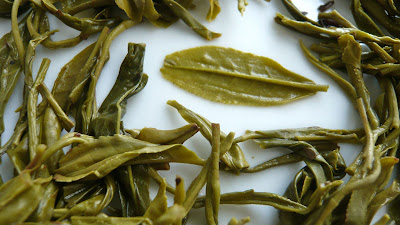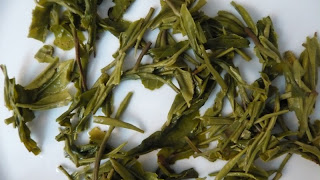Anyway, in order to reinforce my commitment to this infant of a blog, I decided to make use of the time I spend on my public transportation commute outside of the city to write a new entry. Hopefully the less than perfect conditions won't make me sound any more incoherent than normal.
These days, I have been thinking a lot about the significance of tea-ware on the enjoyment of tea itself. For most people just beginning to explore the information available online, the emphasis on tea-ware can often be quite overwhelming (and may often sound a bit ridiculous).
Just cruising through teachat's tea-ware section one can see numerous threads asking about which pot or gaiwan would give them the best results for a specific tea. Other threads give rave reviews of tea-ware with seemingly magical properties ranging from sweetened water to rounder tea.
Just cruising through teachat's tea-ware section one can see numerous threads asking about which pot or gaiwan would give them the best results for a specific tea. Other threads give rave reviews of tea-ware with seemingly magical properties ranging from sweetened water to rounder tea.
While I don't doubt the fact that certain tea-ware can enhance certain aspects of difference teas, I think that it is dangerous to get too caught up in this idea and put too much of an emphasis on imagined “needs”. This is a danger that I have all too often fallen into, lusting after shigaraki kyusu, silver kettles, and expensive yixing pots. However in the end, I feel that nothing has had a greater impact on my enjoyment of tea than learning to pay more attention to brewing mindfully. If the urge ever creeped up to splurge on more expensive tea-ware, I often put the money on better tea.
With all that in mind, I recently set out to fix a weak point in my brewing and ended up finding my own "magical" piece of tea-ware For months I had a problem with keeping the water from my glass kettle hot enough to brew anything other than green tea. For oolongs or Puerh I would end up running back and forth to the range to re-heat the water after 2 or 3 infusions. This not only ruined my focus and enjoyment of the tea but it was practically forcing me to drink only green teas that didn't need higher temperatures.
Of course, this sent my tea-ware envy into high drive and I felt the need to purchase something like a ceramic kettle or even a plain stainless steel electric kettle that would keep the heat longer than my glass kettle or at least eliminate the need to go back and forth to the kitchen. However, remembering my need to keep things simple I began thinking of alternatives. The alternative that I ended up going with works extremely well and not only has increased the enjoyment I get from my sessions but the increased focus has allowed me to taste every tea on a new level. The best part is that it only cost me a couple dollars!
Take a look at my new setup: the rack was originally intended as a vegetable steamer but it works perfectly to hold my kettle while the candles underneath keep my water steaming-hot long enough to even outlast my most durable teas. Even after an hour of drinking the kettle steams and still occasionally lets out a satisfying pop to let me know just how hot the water really is.
Take a look at my new setup: the rack was originally intended as a vegetable steamer but it works perfectly to hold my kettle while the candles underneath keep my water steaming-hot long enough to even outlast my most durable teas. Even after an hour of drinking the kettle steams and still occasionally lets out a satisfying pop to let me know just how hot the water really is.
Gear-lust subdued. Let's enjoy some tea.








